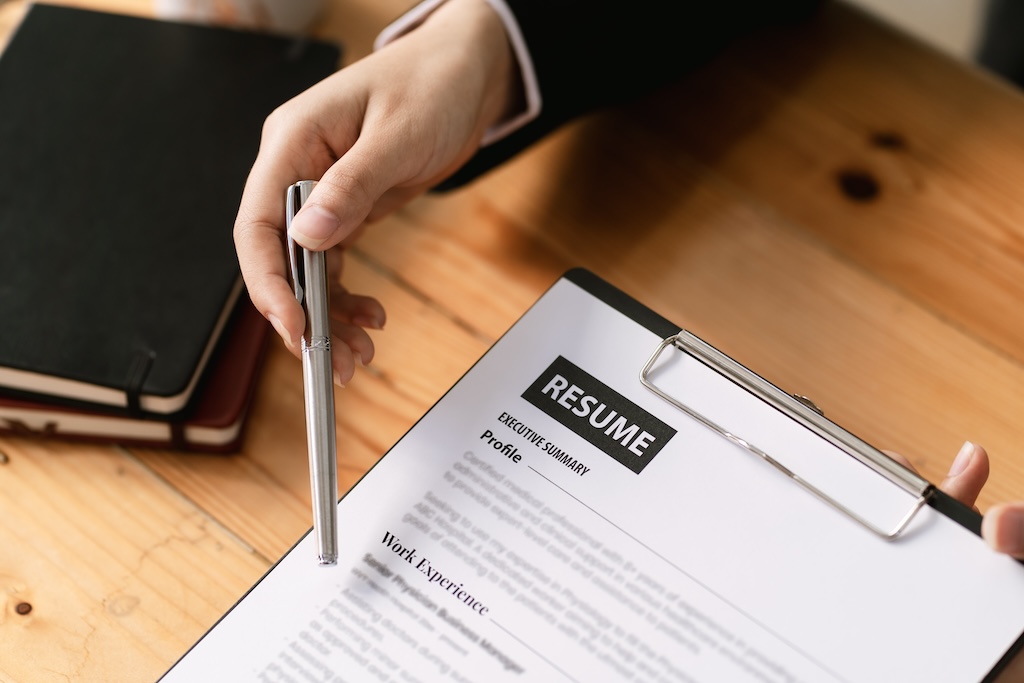
How to Write a Cover Letter for Job Application with No Experience
Crafting a compelling cover letter can be a daunting task, especially when you're entering the job market without direct work experience. This document plays a crucial role in your job application process, serving as a personal introduction and a succinct summary of your potential to prospective employers. In this blog, we will guide you through each step of writing an effective cover letter, even if your work experience is limited.
- The Fundamentals of Writing a Cover Letter
- Crafting a Cover Letter with No Experience
- How to Write a Professional Cover Letter for Job Application
- Overcoming the Challenge of No Work Experience
- From Internship to Career: Next Steps After a Data Science Internship
- Final Touches and Proofreading
Each section is designed to not only address the essentials of cover letter writing but also to offer specific advice for candidates who may not have formal job experience, ensuring you present yourself as a valuable candidate ready to contribute and grow.
Let's dive into the fundamentals of writing a cover letter that captures attention and showcases your potential.
The Fundamentals of Writing a Cover Letter
Introduction to Cover Letters
A cover letter is your first opportunity to make a strong impression on a potential employer. Its main purpose is to introduce you, highlight your key achievements, and elaborate on how your skills align with the job requirements. This document complements your resume by providing a narrative context to your application, helping you stand out among other candidates.
Structure and Format
A well-structured cover letter typically follows this layout:
- Introduction: Briefly introduce yourself and mention the job you are applying for. Engage the reader with a concise statement that reflects your enthusiasm and fit for the role.
- Body Paragraphs: Here, you should detail your qualifications and explain why you are a suitable candidate. For those with no direct work experience, this section can focus on transferable skills, academic achievements, and relevant project or volunteer work.
- Conclusion: Conclude with a strong closing statement. Express your eagerness to discuss your application in further detail and thank the reader for considering your candidacy.
Formatting Tips for Professionalism and Readability
By adhering to these formatting standards, you ensure that your cover letter not only looks professional but is also easy for hiring managers to read, making a positive first impression.
In the next section, we'll explore how to craft a cover letter when you don't have any work experience, focusing on how to identify and showcase the skills that are most relevant to the job you're applying for.

Crafting a Cover Letter with No Experience
Introduction to Transferable Skills
When you're entering the workforce without direct job experience, focusing on your transferable skills is crucial. These are abilities you've acquired through various activities such as volunteering, academic projects, or even hobbies that can be applied to a workplace setting.
Identifying and Highlighting Your Skills
First, examine the job description to understand the skills and qualities the employer is seeking. Then, reflect on your experiences to find instances where you have demonstrated these skills. Common transferable skills include:
- Communication: Articulated through presentations in school or leading group projects.
- Teamwork: Participated in sports or collaborative projects.
- Problem-solving: Managed challenges in event planning or during volunteer activities.
- Organizational skills: Coordinated activities or maintained scheduling for group projects.
Emphasizing Learning and Adaptability
Employers value candidates who are eager to learn and adapt to new environments. Highlight your learning agility by mentioning:
- Courses or certifications you’ve undertaken recently.
- Any new skills you’ve taught yourself through online platforms.
- Adaptability demonstrated during unexpected changes in school projects or group activities.
Using Examples to Demonstrate Your Potential
It’s one thing to claim you have skills, but proving them with concrete examples is key. For instance, if you're applying for a customer service position, you could mention:
- Example: "In my role as a student council representative, I successfully mediated conflicts and developed a feedback system that improved event planning, demonstrating my strong communication and problem-solving skills."
This section not only shows your capabilities but also how they apply directly to the job you want.
Next, we'll discuss how to ensure your cover letter maintains a professional tone while clearly conveying your message, even if your previous experiences aren't directly related to the job market.
How to Write a Professional Cover Letter for Job Application
Maintaining a Professional Tone and Language
Crafting a cover letter requires a balance between showing personality and maintaining professionalism. Your language should be formal yet accessible, avoiding slang and overly casual phrases. Here are key tips to maintain a professional tone:
- Be concise: Keep your sentences short and to the point.
- Use active voice: This makes your writing more direct and dynamic.
- Be polite and respectful: Always express gratitude for the reader's time and consideration.
Customizing for Each Job Application
A generic cover letter is easy to spot and often unimpressive. Tailoring your cover letter to each job application demonstrates your interest in the specific position and company. Include:
- Specific references to the job posting: Mention how your skills align with the job description.
- Knowledge about the company: Reflect your understanding of the company’s goals and how you can contribute to them.
Example: "I am particularly drawn to [Company's] commitment to innovation and excellence, which aligns with my own professional values and enthusiasm for continuous learning and improvement."
Closing with a Call to Action
End your cover letter on a proactive note by inviting the employer to contact you for an interview. Be clear and direct about your interest in moving forward in the selection process.
- Example of a strong closing statement: "I am excited about the possibility of contributing to [Company's] team and am eager to bring my background in [relevant experience or field]. I look forward to the opportunity to discuss how my skills can meet your needs. Please feel free to contact me at your earliest convenience to schedule an interview."
This approach not only ensures that your cover letter is professional but also tailored and personal, significantly boosting your chances of securing an interview. Next, we will explore strategies to further enhance your cover letter when you lack direct work experience.

From Internship to Career: Next Steps After a Data Science Internship
Leveraging Internship Experience
Internships are a powerful way to bridge the gap between academic learning and professional employment, particularly in fields like data science. When transitioning to a career, it’s crucial to effectively articulate the experiences and skills gained during your internship.
- Detail Specific Projects: Describe the projects you worked on, focusing on your contributions and the skills you applied. Highlight any data-driven solutions or innovations you were part of.
- Quantify Achievements: Whenever possible, provide concrete numbers to illustrate your impact. For example, "Contributed to a project that improved data processing efficiency by 20%."
Continuing Education in Data Science
Staying current in the rapidly evolving field of data science is essential. Discuss your commitment to continuous learning by mentioning:
- Advanced Degrees: If you are pursuing or planning to pursue further education, such as a Master's or Ph.D. in Data Science.
- Online Courses and Certifications: List any recent or ongoing education, particularly courses that are recognized in the industry, such as those in big data analysis, machine learning, or artificial intelligence.
Career Pathways in Data Science
Data Science offers a variety of career paths, from analytical roles to more technical ones. Outline these pathways to help readers understand their options:
- Entry-Level Analyst: Starts with data cleaning and basic analysis tasks.
- Machine Learning Engineer: Focuses on creating data-driven algorithms.
- Data Engineer: Specializes in designing and maintaining the architecture used for data processing.
Example of Career Advancement: "Leveraging my internship experience at [Company], where I developed a predictive model that was implemented across the business, I aim to advance to a machine learning engineer position, further enhancing my skills in algorithm development."
In the following section, we'll provide final tips on perfecting your cover letter through meticulous proofreading and by incorporating feedback, ensuring your application stands out in the competitive job market.
Final Touches and Proofreading
Attention to Detail
Your cover letter is often your first impression with a potential employer, making attention to detail critical. Here’s how you can ensure your cover letter is flawless and professional:
- Customize Your Salutation: Address the cover letter to the specific hiring manager when possible. If the name is not available, "Dear Hiring Manager" is a suitable alternative.
- Check for Typos and Grammatical Errors: Meticulous proofreading can prevent simple mistakes from undermining your professionalism. Use tools like Grammarly, or read your letter aloud to catch errors.
Feedback and Revision
Before finalizing your cover letter, seek feedback from mentors, career counselors, or peers. They can provide valuable insights and suggestions for improvement that you might have overlooked.
- Example: "After receiving feedback on my initial draft, I revised my cover letter to include more specific examples of my problem-solving skills, as recommended by my career advisor."
Submission Guidelines
Adhere to the employer's submission guidelines meticulously. This includes:
- File Format: Often, employers specify the file format (e.g., PDF, DOCX). Make sure to comply to ensure your documents are readable.
- File Naming Convention: Use a clear and professional format for naming your file, like 'FirstName_LastName_CoverLetter'.
- Email Subject Line: If submitting by email, use a professional subject line that includes the job title and your name, such as 'Application for Data Analyst – John Doe'.
By following these final touches and proofreading steps, you can enhance the overall quality and effectiveness of your cover letter. This attention to detail not only demonstrates your professionalism but also your genuine interest in the position.
Taking the Next Step: Perfect Your Application with AIP
Before we wrap up, let’s quickly recap the key elements of a compelling cover letter. This table summarizes the important areas you should focus on to ensure your application stands out, even without extensive work experience.
Bridge Your Efforts to Success with AIP
Throughout this guide, we've explored various strategies to craft a compelling cover letter, even without direct work experience. Mastering the art of cover letter writing is not just about landing a job—it's about setting a foundation for your career. By effectively highlighting your skills, adaptability, and eagerness to learn, you can open doors to opportunities that might otherwise seem out of reach.
At Asia Internship Program (AIP), we understand the power of a first impression. A well-crafted cover letter can significantly increase your chances of securing an internship that paves the way to your dream career. This is why when you apply through AIP, we don't just help you find the right internship; we equip you with the tools to make a standout application. Our team of experts will work with you to refine your cover letter and CV, ensuring you present your best self to potential employers.
Are you ready to transform your professional aspirations into reality? Apply for an internship with AIP today, and let us guide you through every step of your journey—from crafting the perfect cover letter to nailing the interview. Visit us at internsinasia.com to discover how we can help you build a bridge to your successful career.
